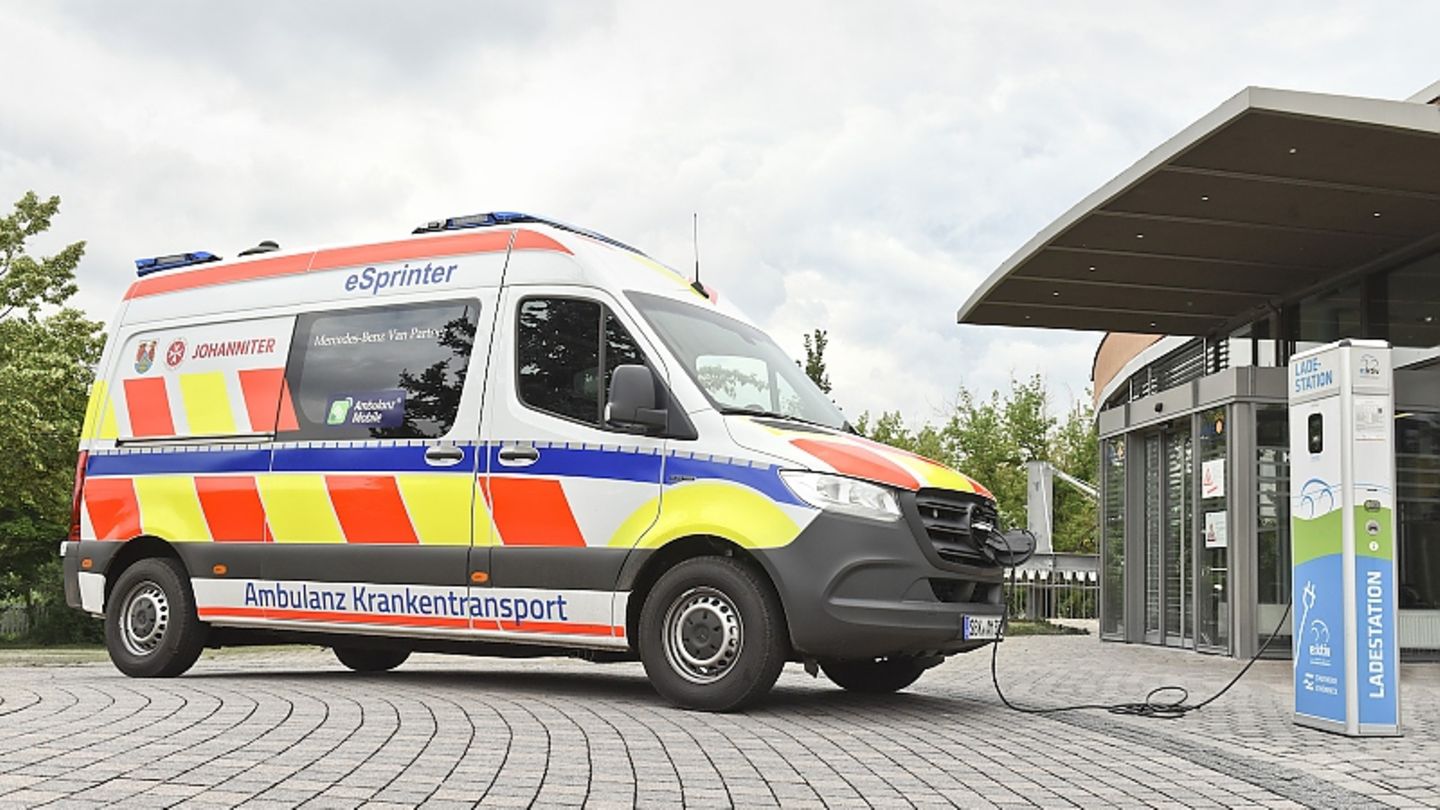Electric motors are also slowly finding their way into the emergency transport and, in contrast to the classic ambulance, ensure a little more quiet on the streets. A Mercedes eSprinter was now on the road in a trial run south of Berlin.
Ambulanz Mobile GmbH from Schönebeck in Saxony-Anhalt is the largest manufacturer of ambulances in all of Europe. Whether in Germany, Spain or the Netherlands – when an ambulance shows up with a blue light in the rearview mirror, it is often a matter of life and death. There is a good chance that the rescue vehicle in Schönebeck near Magdeburg has been made into one. More than 300 people work every day to turn a normal transporter into an ambulance or ambulance.
E-ambulance joint project with Mercedes
Every year around 1,500 vehicles are produced entirely by hand in a small industrial area in Schönebeck. For the first time last winter, an electric Mercedes eSprinter van was converted into a Valeris-e ambulance. “We are very proud that Mercedes-Benz Vans started this project with us,” says Hans-Jürgen Schwarz, Managing Director Ambulanz Mobile, “it is a challenge to build a first fully electric ambulance and our special part is the supply and to make the rear supply facility self-sufficient from the base vehicle. “
It quickly became clear that the normal battery pack of the eSprinter would not be enough to have enough power in everyday use just in case. “Otherwise the electric range would be 30 or 40 kilometers if we had all the medical consumers connected and in operation,” explains sales manager Frank Lundershausen. The special equipment in the ambulance got its own power supply and the energy package of the body was separated from that of the base vehicle by installing two control units.
In the garage, the electric emergency sprinter is therefore with the same power connection on the left-hand side next to the driver’s door as any combustion engine that supplies the battery pack for the specific ambulance equipment. The 55 kWh battery (47 kWh usable) of the electric sprinter, which drives the engine, is charged via a plug that is hidden behind the Mercedes star in the radiator grille. The blue light vehicle charges either with 7.4 kW alternating current or with up to 20 kW direct current. With the optional DC charging power of 80 kW, the battery pack can be charged from 10 to 80 percent in around 40 minutes at a DC fast charging station.
So far no model for the big city
After the three-month trial run in Bindow near Königs Wusterhausen at the Johanniter Accident Aid, everyone involved is more than satisfied. In everyday life, the electric ambulance showed no significant restrictions compared to the combustion brothers. The people transported on the couch knew how to appreciate the noiseless ride without a sirloin and flashing blue flasher just as much as the ambulance drivers themselves.
However, the range of action of the electric ambulance is severely limited with a range of around 120 kilometers. “Until the batteries last for 300 kilometers or more, I see such a vehicle more for patient transport on a large clinic site or in a small town,” says Frank Lundershausen, “that is not enough for a large city. But there are already enough applications. where it fits. “
With 85 kW / 116 PS, the eSprinter ambulance is not a powerhouse, but at least brings the power of the entry-level diesel engine to the wheels. Behind the wheel of the eKTW, which costs 150,000 euros, it is rather leisurely anyway – which should especially please those who are lying down. The individual driving modes that can be switched through for the ambulance driver also fit in with this. The top speed of 120 km / h hardly plays a role, however, since in use you only drive in built-up areas or on country roads.
Since weight was saved everywhere, the total weight is less than 3.5 tons and so the almost noiseless blue-light mobile can also be moved by people with a car driver’s license. In the medium term, it will not remain with the one-off electric piece. “We already have some inquiries about the vehicle from home and abroad,” says Frank Lundershausen happily. The sale of vehicle number one should therefore only be a matter of time.

See in the video: A thief wants to break the door of a medical warehouse in Leicester, UK. After failing several times, he manages it with brute force. His getaway car is also his stolen property – and moves at only 16 kilometers per hour. Nevertheless, the thief manages to escape.
I am a 24-year-old writer and journalist who has been working in the news industry for the past two years. I write primarily about market news, so if you’re looking for insights into what’s going on in the stock market or economic indicators, you’ve come to the right place. I also dabble in writing articles on lifestyle trends and pop culture news.



